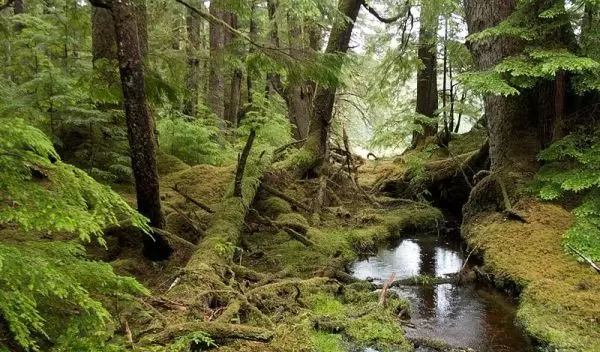
Nature's 'slow lanes' offer hope for species feeling heat of climate change, other pressures
Pockets of landscape less prone than adjacent areas to disturbances such as fire and drought may hold the key for scientists, conservationists and land managers seeking to preserve vulnerable species in a changing climate.
These areas, categorized as "disturbance refugia," are becoming a focal point for ecologists trying to learn why change doesn't occur as quickly in some landscapes as in others nearby.
"In the Pacific Northwest, the iconic northern spotted owl relies on refugia in the form of old-growth forests," said Oregon State University forest ecologist Meg Krawchuk. "These forests are refugia from previous stand-replacing disturbances -- that's how they got to be old -- but they're slowly being nibbled away by recent high-intensity fires."
Known informally as the "lifeboats" or "slow lanes" of biodiversity, refugia have spawned the new field of refugia science, the theme of the June issue of Frontiers in Ecology and the Environment.
Krawchuk, who contributed to the issue with a National Science Foundation-funded study of forest refugia in the combined context of fire, drought and insect outbreaks, says research shows that some locations have inherent characteristics -- such as terrain, vegetation, proximity to bodies of water, and slope-face direction -- that buffer them from disturbances in a predictable manner.
Natural disturbances can create mosaics across a landscape that support biodiversity, but disturbances outside the historical range of frequency and severity can do short- and long-term ecosystem damage.
Recent studies of disturbance refugia in forest ecosystems have focused mainly on fire, Krawchuk said, but the wide range of disturbances in forests necessitates developing a broader understanding of refugia, particularly against the backdrop of climate change.
"When we look at landscapes that have been impacted by forest fires, defoliating insect outbreaks or persistent droughts, the tree damage can be alarming," says Laura Lautz, a program director in NSF's Division of Earth Sciences. "But among that devastation we see islands of green that are resistant to such disturbances. Those refugia are key to sustaining biodiversity, and studies like this one will help us understand why those refugia exist and how we can sustain these areas in the future."


